Doing what your competitors don’t (or doing the opposite of what they do) is a smart radio programming strategy, says branded format expert Arnie Celsie of SparkNet.
Following the first part of this article about the JACK fm radio format and the recent JACK fm 2 brand extension, we now meet Arnie Celsie of SparkNet Communications, a consultancy company specialized in branded formats, programming and research for radio. “It’s about re-imagining what radio’s possibilities are as opposed of just doing a format.”
“It’s a different way of
delivering personality on the radio”
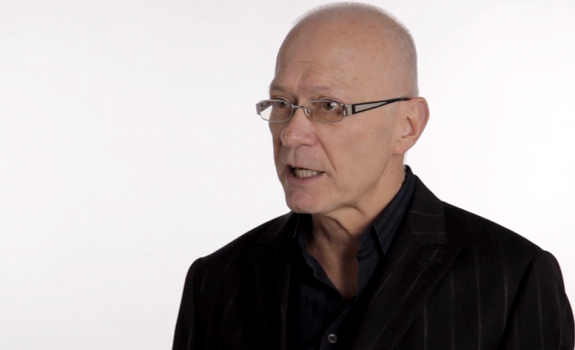
SparkNet radio consultant Arnie Celsie points out that while many stations have talking (radio) heads, JACK fm is a music-driven variety format, where the personality factor is the overal attitude (photo: SparkNet / YouTube)
Give your station personality
“When we created JACK in the first place, we wanted it to have this funky kind of attitude”, Arnie Celsie explains. SparkNet co-president Gary Wall got in touch with David Freeman, a movie script expert who has a screenwriting class and invented the Character Diamond to develop movie characters. “The key is that across the angles of the diamond, from the top left to the bottom right corner, there should be kind of opposites. People can be intelligent, yet shy. Or friendly, but very honest.” Freeman helped SparkNet to define the radio brand ‘stationality’ for both their adult male-oriented JACK fm and their young female-appealing JACK fm 2 – which premiered in the UK in mid August 2013.
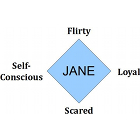 Write stationality-based production copy
Write stationality-based production copy
Giving both radio formats a distinctive character was important as neither of them relies on live radio talent. The JACK fm Character Diamond is useful for copywriting of station imaging, to make sure all promos and sweepers match the brand’s personality. “The station becomes interesting on the air because of it”, says Celsie, who advises to “incorporate at least two, but no more than three character traits” in each production.
Introduce Unique Selling Propositions
Why do most JACK stations in the United States don’t work with talents?
“First of all: because it makes them unique in the environment of competition. Every other station has a lot of deejays, yakking away. If they were doing it, we wanted to do something different. Looking at research, it’s not like many of the personalities on other stations are really well known. If you’re not on the morning show and not have been in the market for 25 years, chances of anybody really knowing you are really slim. We just felt it’s a different way of delivering personality or persona on the radio, without having to deal with live talent.” The consultant adds that, while keeping many original USPs, several JACK affiliates do have a morning show nowadays, and a few of them even have talents on air all day.
“Bob FM plays similar music
to what JACK fm would play”
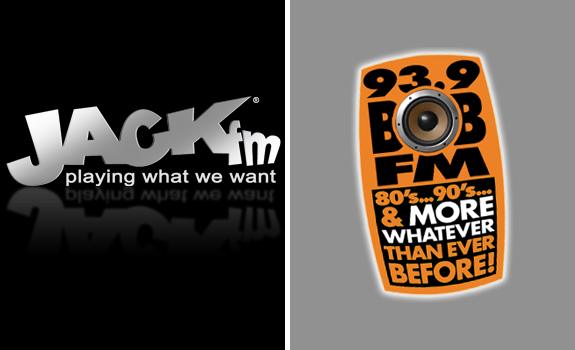
While music formats can be similar, a station’s persona makes the difference (images: SparkNet, Kroeger Media)
Ensure station imaging variety
According to Arnie Celsie, a non-stop music-based JACK fm station is more than just a jukebox and some image liners. “It’s a lot of heavy lifting to do all this writing, haha. I believe that 93.1 JACK fm Los Angeles has seven writers who do nothing but write lines for JACK every week. It’s like writing a weekly TV sitcom.” The idea is to reflect anything from current topics to on-air promotions or funny lines in the imaging. Topical lines are used to mention local events, such as football team results or relevant political scandals, through a witty or sarcastic 7- to 10-second line.
Make your brand relatable
How is JACK fm different from Howard Kroeger’s Bob FM and many other adult male-oriented music formats, such as Dave FM?
“The difference is that JACK fm has a defined personality. The others have live talent on the air, and their brands are more station names like KIIS-FM would be – as opposed to trying to create a persona out of the name.”
Hire positive radio jocks
“Bob FM plays similar music to what JACK fm would play – or JACK plays similar music to Bob, depending on from which side you want to look at it – but the personas of the radio station are very different.” Celsie feels like JACK fm is very focused on its Character Diamond, where the Bobs and Daves of the radio industry are more like traditional stations where the personality is created by live talents. “They may sound upbeat and friendly, or be whacky kind of people, or be straight-ahead jocks who do song titles and weather checks – which JACK doesn’t do.”
“The more you research your P1s,
the more narrow you become”
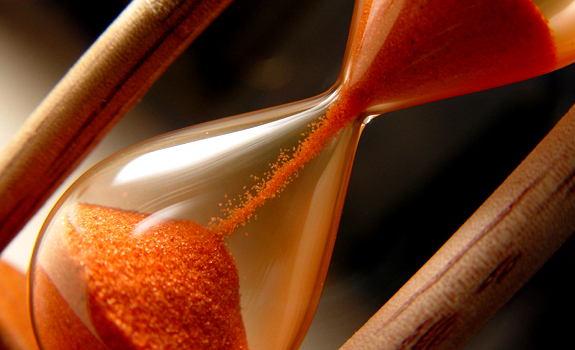
Fulfilling a variety promise of being like iTunes on shuffle and playing a wide selection of 800 songs (where others schedule less than 400) are part of how JACK fm is positioned against the competition (photo: Wallpaper Fast)
Include some spice songs
Has the JACK fm format evolved since its first roll-out in North America?
“Certainly the music has evolved. When JACK first launched in the early 2000s, 80s and late 70s songs just weren’t played on pop radio in Canada and the US.” Arnie Celsie recalls some speculation about whether the music was popular enough and whether the format would last at all. “It proved that it had sustainability, and did very well in all the markets that it was in.” Over the last years, the format gravitated from Pop to Pop-Rock, which he explains from the way that most stations do music testing: “The more you research your P1s, the fans of the radio station, the more narrow you become in your music choice. The music kind of moves in on itself, and some of the fringes that create variety and the interest fall away because they don’t test as well – but they add flavor.”
Refresh music categories regularly
How many active titles are in an average JACK fm’s song rotation?
“It’s probably around 800. When we first launched, it was anywhere from 800 tot 1200 titles. We try to maintain the 800-mark and cycle songs in and out of that. So the actual universe may still be around 900 or 950 songs, but at any time we’re probably scheduling around 800 titles.”
Attract young radio listeners
Celsie feels like the most successful JACK fm stations today maintain their variety proposition, and have a good balance of both Pop and Pop-Rock: “Some of the JACKs have slipped towards Classic Rock and with that, they’ve been slightly less successful.” SparkNet is now doing music research to create a fresh playlist for a new generation of 35-44 year-old adult radio listeners. “They grew up with different music, so their tastes originate from a different song library.” He explains this process goes further than just taking out some 60s and 70s, and adding a bunch of 90s and 00s. While JACK fm currently has a male profile, that’s about to change. “The center of the variety proposition for this new set of 35-44 year-olds is female-based, probably 55% female and 45% male, with a lot more Pop from both the 80s and 90s & 00s.”
“Even the mayor of New York was going:
why did you blow up CBS-FM?”

Even New York City’s former mayor Michael Bloomberg supported the massive public protest after CBS Radio flipped its 101.1 FM frequency from CBS-FM (‘The Greatest Hits of All Time’) to JACK fm back in 2005 (photo: Reuters)
Fill a market hole
Do you have a solid music playlist in every market, or do have localized music scheduling?
“In each markets where stations are programming their own music, it’s localized. They do their own music testing”, Arnie Celsie explains. As a result, West Coast JACK fm stations may sound a bit more alternative and retro than those on the East Coast, where radio listeners are Pop-oriented. “The variety proposition is adjusted to not only fit the tastes in the market, but also the competition in the market.”
Respect station & market history
In New York City, JACK fm appeared… and disappeared. Why do you think it didn’t work there, whereas it did in other markets?
“That’s the biggest misconception about JACK fm. It had about 2 million cume on a weekly basis, and did very well from that perspective. The company that was doing JACK, did not put the format on the right station.”
Leave famous brands alone
CBS Radio introduced the JACK fm brand on the legendary WCBS-FM – while it’s always advised to don’t radically change the format of a heritage radio station. Celsie: “It’s been around since the 1970s as the market’s Oldies station and had a really passionate, strong following. When CBS put JACK on, even the mayor of New York was going: why did you blow up CBS-FM?” He notes that when CBS-FM 101.1 was reinstalled, it sounded different than it used to. “They utilized the years that JACK fm was on to update the Oldies format. A lot that JACK was playing, CBS was now playing. But other than having to fight the PR battles, JACK was pretty successful there.”
“When everybody says the same,
we should say the opposite”

‘We don’t take any crap, but we do play some’ was one of the liners in the early JACK fm days to set themselves apart from the radio establishment by creating a certain attitude and stationality for the new brand (images: SparkNet)
Assemble a copywriting team
How important is the stationality – like a distinctive tone of voice and station imaging – for the format?
“It’s what we hang our hat on in between records; it’s what helps the flow. Like music, the tone of writing evolves along with the audience. How you approach humor is different from one generation to the next. When we bring in a younger writer, we see instantly that his point of view is different from someone who’s been writing for JACK fm for 10 years. Sometimes it’s a good thing and sometimes it’s a little too far.” Arnie Celsie finds it challenging to research what people think of liners and other forms of imaging, because they’re out of context. “When you just read somebody a line, and you don’t have the persona of the radio station to wrap it in, it’s just a group of words put together in a sentence.”
Quote focus group statements
Have you researched the psychological profile of your target audience?
“We did do research after JACK fm launched. A lot of what was developed from the Character Diamond came from people’s listening experiences.” The consultants decided to include parts of real listener feedback in copywriting for JACK fm image liners and other production elements.
Act differently, be unique
Looking at your format book, what are the 5 essential things that make the JACK brand?
“From a radio programming standpoint, 5 pillars of JACK fm are: maximum variety, low repetition, fewer interruptions, less commercials and no deejays. Those make us different, but what makes us unique is the persona. It’s kind of like our slogan: Playing What We Want. When we launched, everybody went: you can’t say that! People will think you’re too arrogant, or not understand what it is and say: how dare you say ‘playing what we want’, ignoring the listener, and say ‘we don’t take requests’, while everybody says you should be playing request songs?” Celsie remembers they deliberately decided to go upstream, instead of going with the flow: “We realized that when everybody says the same, we should say the opposite. A line we’ve used on JACK fm in the early days is: ‘we don’t take any crap, but we do play some’, haha.”
“We create a different persona,
built on the same pillars”
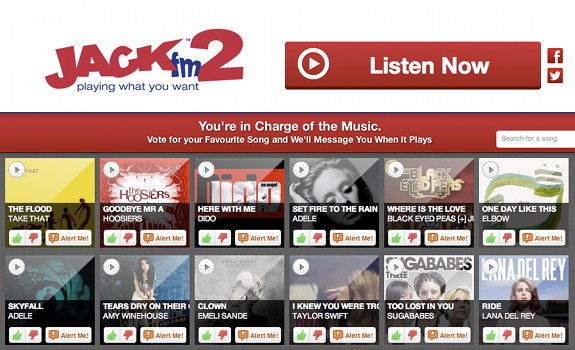
JACK fm 2 goes on where JACK fm ends – completing a young and female-oriented format with an adult and male-based concept, as well as adding an interactive component to the ‘we don’t play requests’ policy (image: OXIS Media)
Develop (younger) format spin-offs
JACK fm 2 is a brand extension that you and OXIS Media have launched in Oxfordshire. Could you tell us a bit more about this new format?
“JACK fm 2 is designed for a younger generation, anywhere from 20-39 years.” Arnie Celsie expects to attract a 60% female and 40% male audience with a current-based music format. Two third of the songs are less than 3 years old, and there are practically no 80s or 90s on the playlist. “It really is trying to go after the 25-54s of the radio world over the next 10 to 15 years, so we can continue to build and grow with those as the original JACK fm gets older.” Listener Driven Radio turns JACK fm 2 into an interactive music format where people can influence the playlist by ‘voting up’ favorite songs. That seems to be mainly a matter of image, by the way, “like contests on the radio. When you do research, 5 to 15 percent of your listeners are actually active contest players. The same will be true for listener-driven radio.”
Use one basic premise
Playing What We Want versus Playing What You Want are two different promises. Why have you both named them JACK?
“They share elements that we talked about from the standpoint of variety. It’s a different kind of music variety, as we create a different persona. But it’s still built on the same pillars of not being like every other radio station is.”
Create a brand universe
There’s a song by Raydio called ‘Jack and Jill’. Maybe Jill could have been a name as well? :-)
“All kinds of things crossed our mind as we were planning and developing. The reason we stuck with JACK fm 2 in Oxford has to do with the British radio culture”, Celsie says in reference to Absolute Radio and BBC Radio who use uniform names to brand a family of stations in a successful way. It can also make sense from a sales perspective. SparkNet is expecting a lot from their spin-off format: “It’s easy to have on for a long period of time. The music has variety, energy and attitude, and it’s not cluttered. The initial response from the listeners and from radio professionals has been very positive.”
“JACK’s Spanish cousin
has its own persona and playlist”

JUAN is a Spanish Adult Hits version of the JACK fm format, created for Hispanic listeners (images: SparkNet)
Employ specialized program directors
In many of the Top 30 US radio markets, the Hispanic population is growing. Are you anticipating on that as well?
“We’ve got JUAN – JACK’s Spanish cousin. He has his own persona and playlist. It’s driven by Spanish Adult Hits, and we have a native programmer who schedules it for us. The format is hugely successful in different markets in the United States. It is built around the same kind of storyline and pillars than JACK is, but it has the Hispanic attitude, humor, values and approaches.” JUAN has been developed by José Santos of Santos Latin Media and was introduced in 2008.
 Create authentic counter formats
Create authentic counter formats
It’s good to find an alternative concept to compete with similar-formatted stations. Celsie sees JACK fm as an option to attack AC brands like 106.7 Lite FM or Fresh 102.7 in New York, while their new hit music format QuickHitz (Twice the Music, Half the Time) could be used to position against a CHR like Z100 or 92.3 NOW in the Big Apple. QuickHitz, which we think is a refreshing concept, will be rolled out in 2014.
Have chemistry with partners
Let’s say I’m a PD in Chicago and I want to license JACK fm 2. How does the deal work?
“There are many ways to get a deal done, haha. For us it’s not just about making the quick sale and getting the format on the air. We have to be compatible with people we’re dealing with. We take a great deal of time in getting to know companies, stations and programmers. We want to know that we’re going to enjoy working together, that they understand they’re getting involved in a creative process, that they’re willing to participate, and that they have the resources to do this on a level that’s going to make it successful. Once you have accomplished that, the rest kind of falls into place”, is Celsie’s experience. Possible options are cash, barter and incentive deals (based on performance).
“Radio is in a very competitive situation”

While the international radio industry mainly talks about new ways of audio distribution, SparkNet’s number 1 goal is to innovate radio formats by looking at program concepts from a different angle (photo: SparkNet / YouTube)
Try out new formats
You work with many stations in the United States, where financial resources are different than they used to be. I also get the impression that many talents and programmers seem to be afraid of taking chances. How do you see that?
“You’re absolutely right. The US is a very conservative radio market – some describe it in other words, but I’ll stick with conservative, haha. They’re cautious and say: who’s doing it and has it been successful? Not many radio companies are willing to say: you know what? I’m gonna’ go for it. Certainly the big companies are very cautious. They’ve got big property at stake, so it’s tough for them to make those decisions. You could argue as well that it’s a self-fulfilling prophecy. If you aren’t creative and don’t evolve, how do you expect to remain relevant in the future?”
Aircheck radio markets internationally
Which stations worldwide are you listening to for inspiration?
“It’s not a matter of saying: we agree with whatever a station or company does. We just mean to get inspiration by listening to different things”, Arnie Celsie puts upfront as a disclaimer. They monitor anything from UK and Australian radio to LA stations like 97.1 AMP RADIO and The World Famous KROQ.
Think outside the box
Sometimes it’s good to polarize: “Radio is in a very competitive situation at the present time. There’s a lot of talk about digital radio, satellite radio, DAB… What we try to do at SparkNet, is ask: what’s not being done – or what’s the opposite of what’s being done? I think that’s where JACK fm came from, from an Adult Hits standpoint. JACK fm 2 is the same sort of thing for a younger generation. QuickHitz is CHR re-imagined, and we’ve helped to put together 102.3 NOW! Radio, a social media radio station [see: Social Media Run The Radio Show]. It’s about re-imagining radio’s possibilities as opposed of just doing a format.”
Update from February, 2017 – After a successful career as a radio broadcaster & consultant (and a good life as a family man), Arnie Celsie passed away on January 28, 2017.

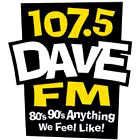



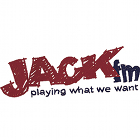





Hi James,
Glad you’ve enjoyed the article!
Yeah, we think it’s good to have a variety of formats in any radio market, as it offers more choice for the listener (and a better chance for jocks to find a station where they’ll feel at home).
Thanks for your kind comment, and… yes, we’ve only just begun :-).
Cheers,
Thomas
Great article, we needed JACK FM to keep the repetitiveness to a minimum.
Whenever I tune in, its always a good jam session.
Thanks for keeping radio alive!
Keep creating.
Hello,
“The US is a very conservative radio market” is an opportunity for creative and unique stations to succeed. JACK is a good example for this.
Best,
Antal